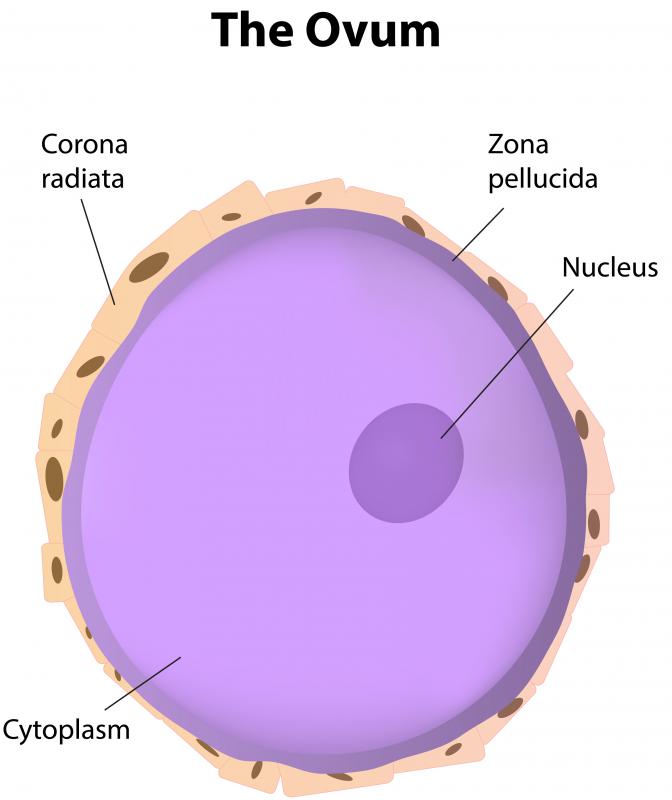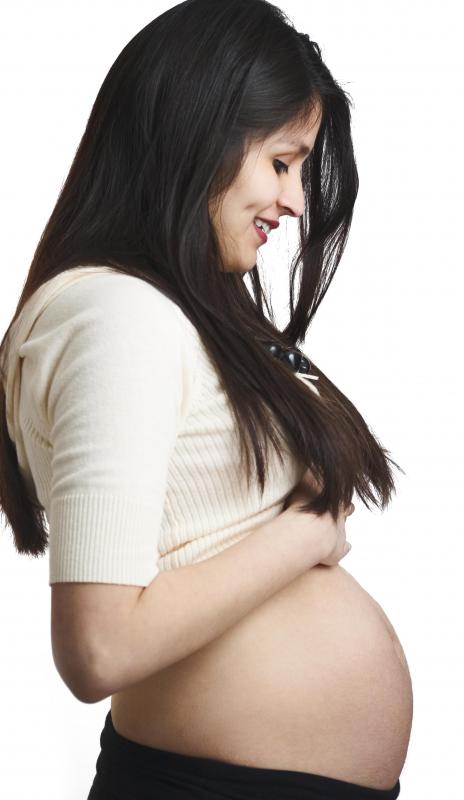At TheHealthBoard, we're committed to delivering accurate, trustworthy information. Our expert-authored content is rigorously fact-checked and sourced from credible authorities. Discover how we uphold the highest standards in providing you with reliable knowledge.
What is an Ovum?
An ovum is a female gamete, a specialized cell used in sexual reproduction. The ovum contains a set of haploid DNA, half the DNA needed to code for a whole organism. When it encounters a male gamete, the ovum becomes fertilized, turning into a zygote which will in turn develop into an embryo, a fetus, and eventually an adult organism. Ova, as they are known in the plural, may also sometimes be referred to as oocytes.
Technically, the term “ovum” is reserved for a fully matured female gamete which is ready for fertilization. In practice, however, people may use this term for egg cells at various stages of maturity. Sometimes qualifiers are added, such as “immature ovum,” to indicate which kind of gamete is under discussion. It can be important to be precise in conversations about gametes at varying stages of development, to make sure that everyone involved understands what is under discussion.

Formation of ova happens inside the ovaries in animals, and inside similar structures in plants. Some organisms use a structure called an archegonium. Once the ovum is fully developed, it survives for a relatively limited time. If it is not fertilized, the ovum will not survive, and the organism will have to make more in the hopes that a chance at fertilization will present itself.

Many organisms supply their ova with nutrition which is designed to help the embryo during early stages of development. This makes ova valuable as a good source. Eggs from fowl, for example, are eaten by humans and many other organisms because they are high in protein and various nutrients. Likewise, many animals eat grains, which are also ova, supplied with nutrients which are designed to assist with development and germination.

A great deal of research has been done on the human ovum, since it is such a critical part of reproduction. People who are having difficulty conceiving may in fact have ova harvested for fertilization outside the body, with the doctor introducing the fertilized embryos and encouraging them to implant. Studying ova has provided researchers with a great deal of information about how humans reproduce and how ova develop in the body, from start to finish.

In humans, ova are produced on a regular cycle, accompanied with consistent changes in hormone levels which are designed to prepare the body for fertilization of an ovum and subsequent implantation and pregnancy. The body will continue to repeat these cycles until pregnancy occurs or menopause sets in.
AS FEATURED ON:
AS FEATURED ON:

















Discussion Comments
So does that mean the ovum is only the part of the female, or both female and male?
The problem is that the medical community does not inform the general public of this risk, and thus most women who experience first trimester miscarriages fall into a period of self-blame, believing that their bodies cannot carry a child or that nature is telling them they are not fit to be mothers. While there is no prevention for a blighted ovum scenario, there is prevention for the psychological harm that such devastating scenarios can place upon expectant mothers: information.
@Bjorn - Thank you for this additional information! When I was experiencing hardships carrying my pregnancies, the doctors never told me about blighted ovum symptoms or that it could even occur.
I always felt that maybe there was something wrong with the embryo that would have made it die later on and that's why I lost the pregnancies. It's very nice to know that my feelings may not have been too far off and actually had a base in medical fact!
How wonderfully fascinating! I always thought ovum were simply human or animal eggs; I had no idea that plants had them too. Not that they don't reproduce, but I just didn't know they had the same name.
At any rate, the anatomy of the female, and reproduction in particular, has always interested me deeply. In all of my research I've never taken the time to study this fundamental concept, so now I feel a bit more well rounded in my knowledge.
Thanks for the overview -- just one question though. Can you tell me a little bit more about what happens if a human ovum is not fertilized, and what factors impact fertilzation? I am doing a biology paper on the female reproductive system, and I really need to get this stuff down pat.
Can anybody give me some more information?
Post your comments